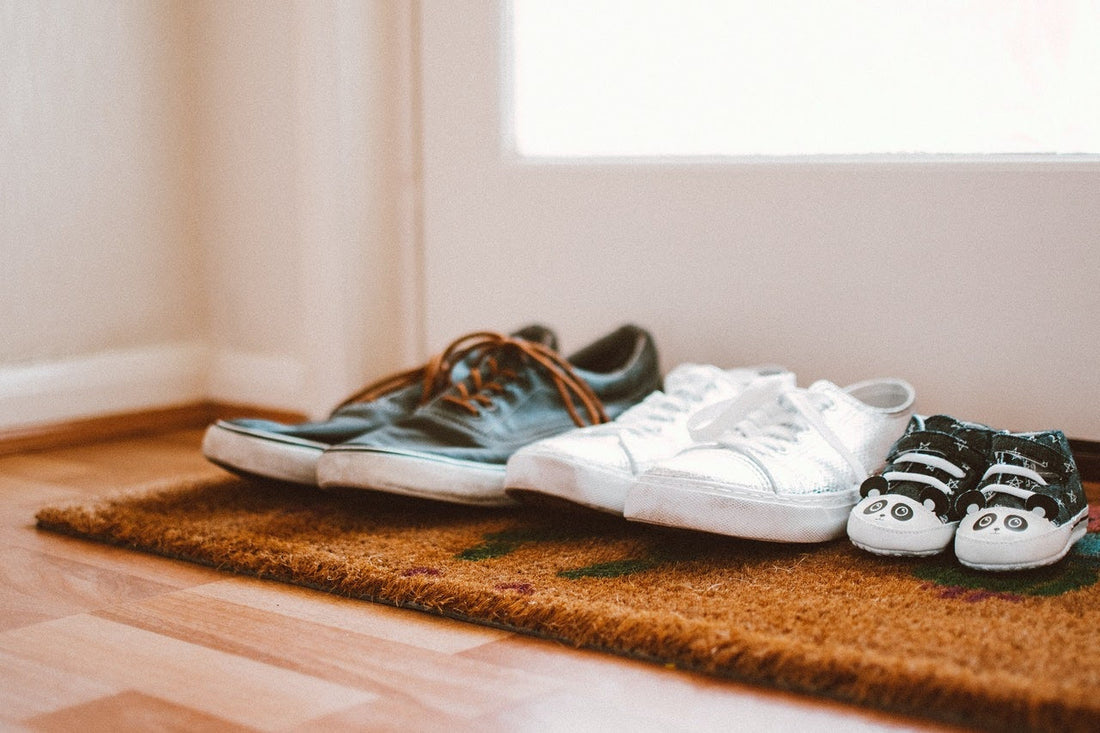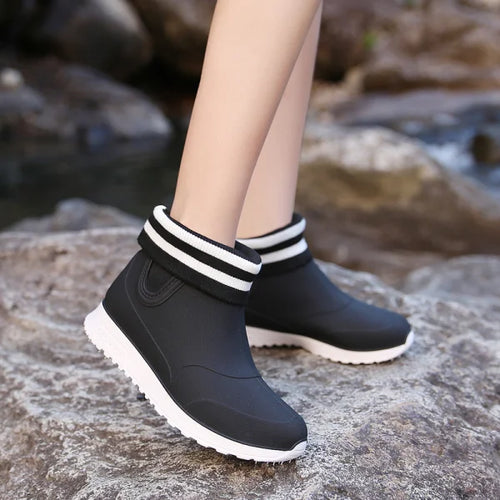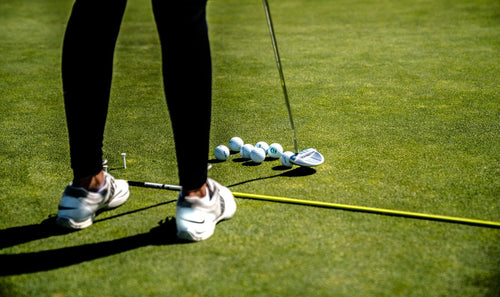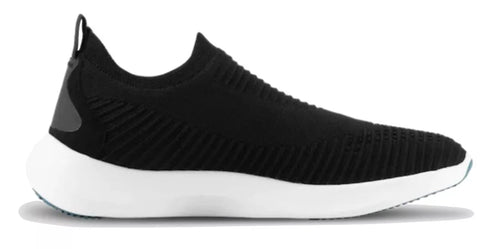Lots of people have a strict “no shoes indoors” policy inside of their house. Are you one of them?
The answer may vary, depending on the kind of person you are.

For many, indoor shoes are a strict no-no. They cannot fathom the thought of your dirty footwear inside - whether it is slippers or joggers.
However, there are some people with waterproof running shoes that swear their shoes can stay dry even after heavy deluge.
So what gives?
While it is true that some shoes can carry bacteria, the answer is more nuanced than that.
To help us better understand the full picture, we turn to science in hopes of demystifying bacteria.
The Secret World of Microbes: A Bacterial Primer

Germs - They’re all around us.
For some people, the word germ conjures up images of filth and disease. It is hard to blame them, though: an estimated 33000 people die each year due to infections caused by antibiotic-resistant bacteria alone.
However, not all bacteria are germs. Bacteria can be classified into either good or bad bacteria, whereas germs are exclusively bad microbes. These can include infectious bacteria, harmful fungi, or deadly viruses, to name a few.
Bacteria are all around us, whether indoors or outdoors. The average smartphone carries more bacteria on it than a toilet seat!
They can be found inside of our guts as well. These gut microbes - which are friendly bacteria - are the silent heroes of our bodies. They do more than just aid digestion and have been known to regulate mood; a study linked the presence of certain bacteria in the gut with depression.
We have so far identified that there are good bacteria and there are bad bacteria. However, what does this mean for shoes?
Let us now see how shoes can bring bacteria indoors and whether or not these pose a threat to us. Stick with us because we will recommend a pair of waterproof running shoes that are specifically crafted for maximum cleanliness and anti-bacterial properties.
Do Shoes Spread Bacteria Indoors?
A shoe tracks in more than just mud - it can potentially track in a variety of dangerous pathogens and other dangerous microbes.
While many researchers have identified shoes as potential vectors for infectious diseases, opinions are still divided. Some claim that the image of bacteria-caked shoes spreading disease is an exaggerated one.
At the same time, there is plenty of evidence that indicates shoes do indeed bring in some bacteria indoors. Studies have indicated that the bottom of shoes can carry a wide number of bacteria, such as E. Colli, which can cause meningitis, diarrhea, and urinary tract infections.
But is carrying E.Coli in your shoes a recipe for disaster? After all, it’s not like we’re eating our meals off the floor, even with no shoes inside.
Although the evidence is certainly there that both the insides and outsides of the shoes can carry bacteria, they are simply not much of a threat. This, of course, is in comparison to more serious health risks, such as not washing your hands before a meal.
We recommend you err on the side of caution and eliminate any sources of harmful bacteria indoors. However, at the end of the day, the propagation of bacteria indoors comes down to a variety of different factors - from your hygiene practices to your environment.

Lastly, if you decide to wear shoes indoors after all, at least consider shoes with strong antibacterial properties. The Loom Waterproof Sneakers are waterproof running shoes designed with special materials that prevent bacteria from breeding both inside and outside your shoe.
Also read: Best Winter Waterproof Snow Shoes 2021
Reasons To Take Shoes Off Inside
Beyond Bacteria, there are plenty of reasons you may still want to consider taking your shoes off at home - whether they are sandals or waterproof running sneakers.
To Spare Damage to Your Floors
Nothing gives a house flavor like custom flooring. Whether it’s classic oakwood floors or modern marble, your floor can say a lot about your house.
Why, then, would you choose to tarnish your good name - and your floors - by allowing shoes inside?
The soles of joggers, waterproof running shoes, and hiking shoes alike are meant to endure wear and tear. They can withstand hard and rough surfaces, such as dirt trails and concrete paths.
Naturally, your smooth floors are not a good place to bring your shoes in. For better longevity against wear and abrasion from shoe soles, we recommend you take your shoes off at home.
To Keep Your House Clean
Why go through all the effort dusting, mopping, and cleaning if you’re only going to bring your shoes inside and reset the mess?

For those living near the coastal, forest, or muddy areas, the likelihood of tracking sand, soil, and mud inside a house is high. A hard ‘no shoes inside’ policy can at least somewhat restrict the amount of earth that makes it inside your house.
Similarly, if you are living near a construction site, your shoes are likely to carry with them dust and soil from construction activities.
If you live near such places and still prefer your shoes on for some reason, we recommend you keep two pairs of shoes: one, a cozy pair of indoor sandals and two, a pair of waterproof running shoes.
For Your (Fur) Babies
If your house is the company to little ones that walk on four legs instead of two, you might also want to consider leaving all shoes outside.
Whether you have human children or pets living with you indoors, it may be a good idea to leave all shoes outside.
Infants and young toddlers crawl on all fours and spend much of their time close to the floors. With skins as smooth as a baby’s bottom, your young ones are likely to scrape their kneecaps on dried mud or tiny rocks that shoes can often bring inside.
Babies are also prone to sticking things inside their mouths. A pair of waterproof running shoes left inside might be fascinating to a baby to examine - unfortunately not in the most hygienic of ways.
Your dog might also sneak up on that breakfast sausage you accidentally dropped on the floor, in which case a clean floor could be the difference between a trip to the vet’s or not.
For Your Sole Benefit

Finally, it is worth remembering that the sole beneficiary of walking barefoot indoors is you - pun intended.
The benefits of walking barefoot have been known for a long time. Human beings initially evolved to walk barefooted. Naturally, leaving your favorite pair of waterproof running sneakers on all the time might not be the best for your health.
One of the main reasons to walk barefooted inside - or at least with socks on - is the benefits it has for the feet and leg muscles.
Walking barefoot can bring about improvements in balance and body awareness. An important aspect of this is increased proprioception: the awareness of one’s body in space. Leaving your shoes on for a long time might weaken these aspects of your locomotive health.
Five Quick Tips for Leaving Your Shoes Outside
If you’re convinced to leave your shoes outside once and for all, it would be best to make a habit of it.
What better way to forge a habit than make small changes at a time, then reinforce them until they come naturally? Here are five quick tips to make sure your shoes stay outside where they belong.
- Keep a shoe rack outside. A shoe rack will provide a place for beach sandals and waterproof running shoes alive.
- Put up a sign; A sign can indicate to potential visitors and remind yourself to leave your shoes outside.
- Wear socks inside. Wearing socks is a good way to ensure you get the comfort of wearing your shoes without damaging your floors.
- Clean your floors regularly. What better incentive to keep your floors tidy than to keep your muddy shoes where they belong?
- Invest in anti-bacterial footwear. For the most stubborn among us, loom’s waterproof running shoes are the best choice for anti-bacterial shoes for casual indoor wear.
Conclusion
Being a raging germaphobe is not the only reason to leave your shoes outside. Benefits to feet, the health of children and pets, and keeping their houses clean and floors pristine are just some of the reasons people choose to go barefoot indoors.
Some of the tips to make sure your shoes stay outside include buying a shoe rack and wearing socks indoors.
Our favorite tip so far remains investing in a good pair of anti-bacterial waterproof running shoes.
Whether you consider wearing your shoes indoors or leaving them outside, it is ultimately your decision to make. At the end of the day, what matters is that you provide yourself with the environment that is most comfortable for you.


























